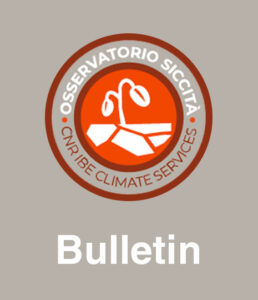In late May, the long-lasting drought across Europe continues to tighten its grip, particularly in the western Mediterranean and eastern regions.
Persistent drought has plagued various parts of southwestern Europe for almost two years, despite May’s rainfall (in some cases even flooding), which has reduced the accumulated deficits in the short and medium term. In Spain, for example, May ended with rainfall totals around or above average in some areas, but the average water reserves remained below 50% (see the featured image).
The Situation in Italy
In Italy, the rains, even above average, have been beneficial (where they were obviously not “destructive” as in the case of the floods in Emilia Romagna). The rainfall has undoubtedly increased the water reserves in the large lakes and reservoirs in the north, with water levels reaching almost maximum capacity in Lake Maggiore and Lake Iseo, and hydrological heights finally above average, except for Lake Garda, which is slowly catching up.
Even the levels of the Po River, after months of stagnation well below average values, have risen along its entire course, particularly in the latter half of the month (with sometimes significant fluctuations due to intense rainfall events). In Piedmont, groundwater levels are also increasing, although the groundwater table (the distance between ground level and the water table) remains ample (Source: ARPA Piemonte).
The May precipitation also included snowfall, reducing the deficit from -64% in March to -49% in early June compared to the reference period of 2011–2021 (Source: CIMA Foundation). However, the snowfall was not uniform and was mainly concentrated in the western sector of the Alps.
Furthermore, the hydropower sector in Northern Italy continues to maintain production levels higher than last year, which was the worst since 2016 (Source: ENTSO-E).
Forecast for the upcoming months
As for the temperatures during the July-September quarter, European meteorological centres agree that temperatures will be above average throughout Europe. In Italy, these anomalies may be more pronounced in the northern regions, particularly in August (with a probability between 50% and 60%).
With regard to rainfall, the upcoming quarter is forecast to be wetter than average, particularly in the Mediterranean and Western European regions. In Italy, these precipitation patterns are expected to primarily affect July and August, while September should see normal levels of rainfall.
However, it should be noted that low precipitation characterises the summer months.







